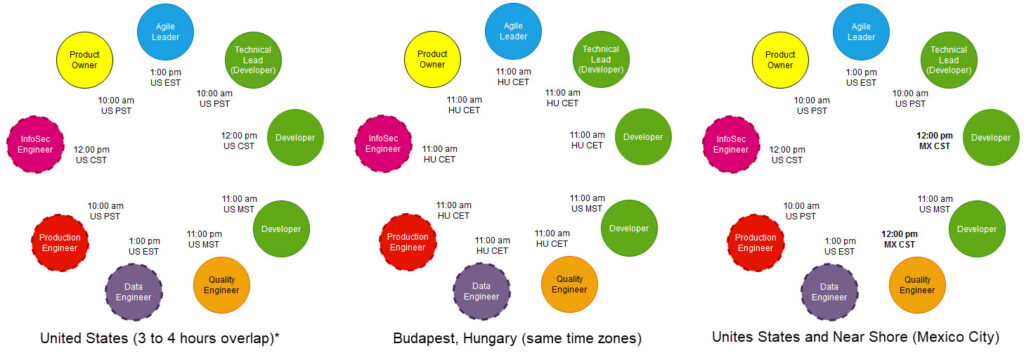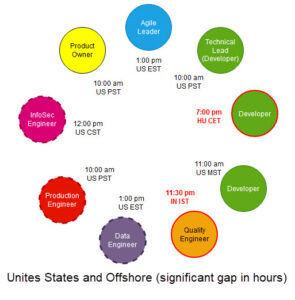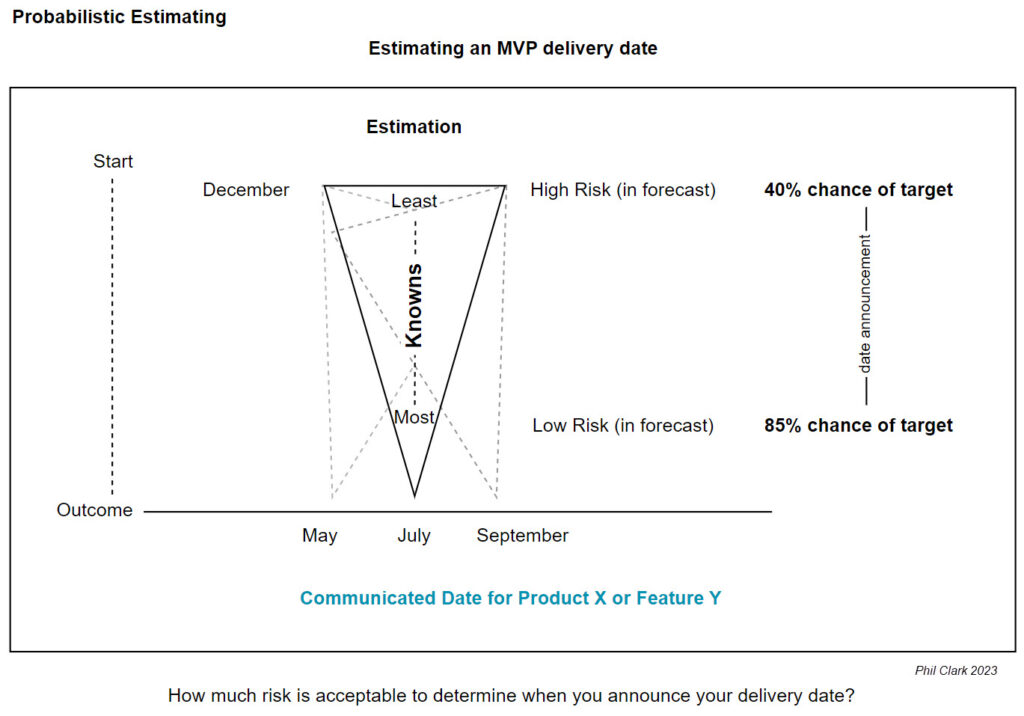9 min read

“Alignment is a force multiplier.”
― Gereon Hermkes
I was invited recently to a meeting with Agile Leaders, Product Owners, and various cross-functional roles. The aim is to establish a regular meeting among team members to align on the reasoning behind our team structures, identify who leads the delivery, and clarify team roles. Following a word cloud exercise, it became evident that team members were not on the same page regarding why our teams are structured as they are, the essence of agility, diverse perspectives on metrics, and, notably, a product owner questioning the value of the Agile Leadership role on the team or not understanding the role responsibilities. Besides administrative tasks and facilitation, what are the responsibilities of a Scrum Master or Agile Leader?
What problem am I trying to address? Team alignment: should we have agile leaders within teams? If yes, what additional responsibilities do they carry beyond team facilitating rituals?
Questioning the Agile Leader role is not uncommon. More recently, certain organizations have dismissed these team members to cut costs, failing to recognize the significance of their role. They have redistributed some responsibilities among the remaining agile team members.
Cross-functional delivery teams striving for enhanced alignment on Agile and Lean practices, team purpose, responsibilities, and the Agile leader’s role may encounter hurdles. Conversations within my extensive network in the past two years and themes in various podcasts have shed light on the dynamic between Product Managers/Owners and Agile Leaders/Scrum Masters. In misaligned teams, Product Owners often scrutinize the roles of Scrum Masters or Agile Leaders, the team itself, its practices, and the accountability for the team’s deliverables.
Two books, among many that shaped my perspective
In Agile software development, balancing various responsibilities and understanding the unique team roles is crucial to fostering an environment that encourages efficiency, innovation, and adaptability. This article synthesizes insights from Agile methodologies, “Team Topologies” by Matthew Skelton and Manuel Pais, and “Project to Product” by Mik Kersten, offering a comprehensive view on enhancing team dynamics for optimal performance. Here, we delve into the essence of Agile leadership, team composition, challenges linked to dominant product management, and the vital importance of harmonizing the four work types: features, defects, technical debt, and risk.
“Team Topologies” emphasizes the importance of intentionally designing team structures and interactions to optimize workflows and enhance the software delivery process. This approach is fundamentally aligned with the principles of Agile methodology, where the focus is on creating teams that can operate with high autonomy, clear purpose, and minimal necessary interaction to reduce cognitive load and foster innovation.
The book introduces four fundamental team types: Stream-aligned teams, Enabling teams, Complicated Subsystem teams, and Platform teams. Each serves a unique purpose within the organization, from directly delivering value to customers to providing specialized knowledge or infrastructure that supports other teams. This structured approach to organizing teams underlines the necessity of having an Agile leader who is not only versed in facilitating collaboration and alignment but also skilled in navigating the team through the complexities of modern software development environments.
Reducing the unnecessary cognitive burden on teams, a fundamental concept elucidated in “Team Topologies,” clarifies why a product manager, already juggling multiple responsibilities, cannot effectively assume the role of an Agile leader. Product managers are crucial in shaping the product vision, aligning it with market demands, and focusing on customer-centric features and growth. On the other hand, Agile leaders foster team dialogues, ensuring a comprehensive understanding of the organization’s current and future states and that of the customer and system. This ensures conversations encompassing feature development, technical debt management, quality enhancement, and risk mitigation. By adopting this approach, the team’s efforts are channeled toward sustainable and high-quality software delivery.
“Project to Product” by Mik Kersten, enriches our understanding of Agile team dynamics and the importance of Agile leadership, especially in balancing different types of work. Kersten’s book emphasizes modern businesses need to adopt a continuous product-focused value stream to avoid becoming obsolete, much like Nokia or Blockbuster did. This approach aligns with Agile principles by focusing on delivering end-to-end value to customers, underscoring the critical role of Agile leaders in facilitating this process.
Kersten introduces the Flow Framework, which models the entire organization as a value stream, highlighting four types of work: features, defects, technical debt, and risk. This framework complements our discussion by providing a structured method for balancing these work types, ensuring that teams stay focused on one at the expense of others. A dominant product manager might skew the team’s efforts towards feature development, neglecting technical debt and risk mitigation. However, with their unbiased perspective and dedication to the team’s overall health, Agile leaders are crucial for ensuring that all types of work are addressed appropriately, aligning with organizational goals and the system’s performance.
“Project to Product” also challenges outdated business and technology ideas, advocating a shift from project-oriented management to a product-centric approach. This shift is essential for fostering Agile teams that are adaptable, collaborative, and capable of delivering continuous value. The book’s emphasis on avoiding local optimization and focusing on the end-to-end value stream resonates with the Agile leadership role in facilitating a balanced approach to work prioritization.
Incorporating Kersten’s insights, it becomes evident that Agile leadership is not just about facilitating daily stand-ups or managing sprints; it’s about embracing a broader vision that aligns team structures, software architecture, and value stream architecture. This alignment is essential for creating high-performing teams that can navigate the complexities of modern software development, delivering value rapidly and effectively while maintaining the health and performance of the entire system.
The conflation of product management with Agile leadership is a common pitfall
An overbearing product manager, assuming control over the team and dictating priorities based on a singular focus on growth, can stifle the very essence of Agile methodology. Such an approach undermines the team’s autonomy and creativity, jeopardizing the product’s long-term sustainability and quality. It creates a culture of mistrust and resentment, diminishes morale, and disrupts the collaborative dynamics essential for Agile success.
The balance and interplay among Agile leadership, product management, and technical leadership are where the magic of Agile truly happens. Agile leaders ensure that all types of work — features, technical debt, quality assurance, and risk mitigation — are balanced and prioritized according to the team’s collective understanding of organizational goals. This balanced approach, guided by Agile leadership, empowers teams to deliver high-quality products that meet customer needs while fostering an environment of continuous improvement and adaptation.
Agile leadership, like product ownership or the technical leader, is not about hierarchical control but about enabling a culture of collaboration, empowerment, and excellence. It’s about guiding teams through the complexities of software development, ensuring that every member feels valued, heard, and motivated to contribute their best. When product owners or managers question their role, Agile leaders have a compelling narrative to share — one that underscores their critical contribution to nurturing high-performing teams that are agile, resilient, and aligned with the organization’s strategic goals.
The strength of Agile software development lies in its emphasis on people, interactions, and customer-centric outcomes. By affirming the unique value of Agile leadership, organizations can ensure that their teams are efficient and productive, engaged, innovative, and aligned with a shared vision for success. This holistic approach to team dynamics and delivery sets Agile apart, making it an indispensable methodology for achieving excellence in today’s fast-paced and ever-evolving software development landscape.
Understanding our Agile team structure
Agile teams are intentionally cross-functional, comprising diverse skill sets and expertise to ensure that the team is self-sufficient in delivering value. This structure is designed to provide all the skills needed to deliver value in a team, foster collaboration, encourage shared accountability, and facilitate rapid responses to change while focusing on delivering customer value.
Every team member contributes unique value, whether developers, quality assurance specialists, or product managers. While we require various specific roles, no single role outweighs the importance of others. Instead, Agile thrives on peer-to-peer interaction, underscoring the importance of every team member being seen as equals. This egalitarian approach eliminates silos, encourages open communication, and leverages the collective wisdom of the team to overcome challenges and seize opportunities.
The ecosystem of roles
In a high-performing department, Agile teams, renowned for their collaborative approach, typically consist of developers, quality assurance specialists, product managers, and Agile leaders like Scrum Masters. This diverse structure promotes autonomy and swift adaptation to change, highlighting peer-to-peer engagement and transparent communication. The power of Agile lies in breaking down barriers and harnessing shared expertise.
The Agile Leadership role
At the core of the Agile framework lies the Agile leader. This role can be a topic of debate, especially when compared to dominant product management. The Agile leader is not another cog in the wheel of task execution but a pivotal force that empowers the team to reach its full potential. Unlike product managers, who focus on market demands and product features, Agile leaders bring unique skills to nurture team health, streamline processes, and uphold Agile values. The Agile leader operates from a vantage point of neutrality, emphasizing team health, process efficiency, and adherence to Agile principles. They act as the team’s compass in navigating work complexities, stressing collaboration, team coherence in four types of work, problem-solving, and continuous improvement.
- Delivery efficiency and optimization: Measuring flow (delivery efficiency) and realization (value impact) ensures you’re building the right things and building them efficiently. Operational efficiency improvements must focus on both. As Value Stream Management subject matter experts, agile leaders help the team improve delivery efficiency and flow. They can help the teams identify bottlenecks and waste and improve flow. They analyze the data and bring the conversations to the team to understand bottlenecks and experiment with improvements. They challenge product managers or owners to define and track anticipated outcomes to avoid misalignment with broader goals, championing the importance of feedback loops in verifying value realization and “closing the loop.”
- Facilitation Skills: Agile leaders are trained in facilitation techniques to conduct effective meetings, workshops, and Agile ceremonies. This ensures that team interactions are productive, engaging, and aligned with Agile principles.
- Coaching and Mentoring: A significant part of Agile leadership training involves coaching and mentoring skills. Agile leaders learn how to coach team members, foster a growth mindset, and facilitate personal and professional development within the team.
- Conflict Resolution: Agile leaders are equipped with conflict resolution techniques to navigate and mitigate interpersonal conflicts within the team. This training is crucial for maintaining a collaborative team environment.
- Change Management: Agile transformation often involves significant changes in team dynamics and organizational culture. Agile leaders are trained in change management strategies to smoothly transition teams to Agile ways of working, ensuring buy-in and minimizing resistance.
- Neutrality: The Agile leader is the team’s compass, steering the group through the complexities of project delivery without bias towards any specific type of work. They aim to ensure the team can perform at its best, irrespective of the work type—new features, technical debt, bug fixes, or risk mitigation.
- Removing Impediments: Agile leaders are skilled in identifying and removing obstacles that hinder the team’s progress. Their sole incentive is the team’s success, which allows them to act impartially and decisively in addressing challenges that impede efficiency and productivity.
- Promoting Agile Values and Practices: Through coaching and mentoring, Agile leaders instill and reinforce Agile values within the team, promoting practices that enhance collaboration, continuous improvement, and customer satisfaction. They are the custodians of Agile ceremonies, ensuring that these practices are meaningful and contribute to the team’s growth and success.
- Ensuring Collaboration and Consensus: In fostering a collaborative team environment, Agile leaders ensure that decisions are made collectively, with input from all team members. This consensus-building approach ensures alignment with organizational goals and harnesses the team’s collective expertise.
On the flip side, the role of the product manager or owner is distinct yet crucial. They act as the link between customer needs, business goals, and the development team. Their main aim is the product’s success — establishing the vision, deciding on features, and ensuring deliverables meet market demands. While focusing on product and growth is key, it can sometimes narrow the perspective by prioritizing feature development over critical aspects like addressing technical debt, ensuring product quality, and managing risks.
Conclusion
Your choice is how you organize your teams, considering that context varies and there is no one-size-fits-all approach. I acknowledge the importance of the Agile Leadership role in propelling our team to success. The alignment among Agile leadership, product management, and technical proficiency is crucial for top-tier Agile teams. Agile leaders foster team engagement and advancement by leveraging data insights, assessing efficiency metrics, handling team dynamics, promoting team coherence on objectives, and facilitating necessary discussions for teams to align with current requirements and establish work priorities. Collaborating, embracing shared responsibility, and managing diverse work types are vital for team efficiency and focusing on delivering sustainable, high-caliber software solutions. Making decisions on features, defects, technical debt, and risks in line with organizational objectives is essential for the overall health and performance of systems and solutions.
Related Posts
- Agile Software Delivery: Unlocking Your Team’s Full Potential. It’s not the Product Owner. December 29, 2022.
Poking Holes
I invite your perspective to analyze this post further – whether by invalidating specific points or affirming others. What are your thoughts?.
Let’s talk: phil.clark@rethinkyourunderstanding.











